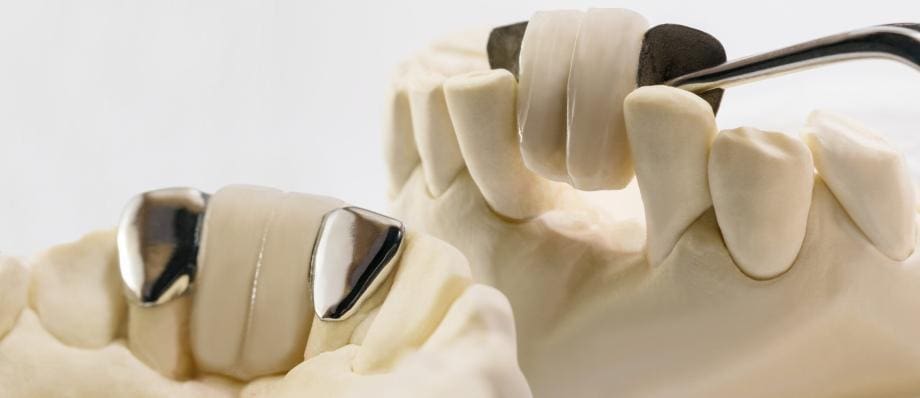A confident smile plays a vital role in our overall appearance and self-esteem. Dental restorations have come a long way in providing effective solutions for restoring missing teeth. One such solution is the Maryland bridge, a popular choice for both functional and aesthetic restorations. This article aims to shed light on the Maryland bridge, exploring its features, benefits, limitations, and the procedure involved. By understanding this innovative dental technique, patients can make informed decisions about their oral health and work towards achieving a beautiful and fully functional smile.
Table of Contents
ToggleUnderstanding the Maryland Bridge
The Maryland bridge, also known as the resin-bonded bridge or the Maryland bonded bridge, is a dental prosthesis used to replace a single missing tooth or a small span of missing teeth. It is a minimally invasive and conservative option compared to traditional bridges or dental implants. The Maryland bridge consists of a pontic (false tooth) that is held in place by a metal or ceramic framework bonded to the adjacent teeth.
Advantages of Maryland Bridge
- Preservation of Natural Tooth Structure
- Aesthetics
- Conservative Procedure
- Cost-effective
Preservation of Natural Tooth Structure
Unlike traditional bridges that require the grinding down of adjacent healthy teeth, Maryland bridges rely on minimal alteration of the adjacent teeth for support. This preservation of natural tooth structure is a significant advantage.
Aesthetics
The metal or ceramic framework used in Maryland bridges can be customized to match the color and contour of the patient’s natural teeth, providing a seamless and aesthetically pleasing restoration.
Conservative Procedure
Maryland bridges do not require complex surgical procedures, making them a less invasive option. The procedure involves minimal discomfort and a shorter recovery period compared to dental implants or traditional bridges.
Cost-effective
Maryland bridges are often more affordable than all types of dental implants or traditional bridges, making them a popular choice for patients seeking an economical yet functional restoration.
Procedure for Placing a Maryland Bridge
- Examination and Treatment Planning
- Tooth Preparation
- Impression
- Framework Fabrication
- Bonding
- Bite Adjustment and Polishing
Examination and Treatment Planning
The dentist conducts a thorough examination, including X-rays and impressions, to evaluate the condition of the adjacent teeth and the patient’s overall oral health. A treatment plan is formulated based on the findings.
Tooth Preparation
The adjacent teeth are minimally prepared by removing a small amount of enamel to create space for the framework. This step ensures a secure and stable bond.
Impression
An impression of the prepared teeth is taken to create an accurate mold for the fabrication of the bridge and framework.
Framework Fabrication
The bridge framework, usually made of metal or zirconia, is custom-designed in a dental laboratory to match the patient’s natural teeth.
Bonding
Once the framework is ready, it is carefully bonded to the adjacent teeth using dental cement or resin. The pontic tooth is then attached to the framework, completing the restoration.
Bite Adjustment and Polishing
The dentist ensures proper occlusion (bite) and makes any necessary adjustments. The bridge is polished to achieve a smooth and natural appearance.
Limitations and Considerations
- Limited Span
- Durability
- Risk of Debonding
- Adjacent Tooth
- Sensitivity
Limited Span
Maryland bridges are most suitable for replacing a single missing tooth or a small span of missing teeth. For larger gaps, alternative options like dental implants or traditional bridges may be recommended.
Durability
While Maryland bridges can be long-lasting with proper care, they may not be as durable as dental implants or traditional bridges. Patients should follow good oral hygiene practices and avoid excessive forces on the bridge to maintain its longevity.
Risk of Debonding
The bonding used to secure the bridge may occasionally fail, resulting in debonding. Patients should avoid biting hard objects or engaging in habits like nail-biting to minimize this risk.
Adjacent Tooth
Once the framework and pontic tooth are bonded in place, the dentist may perform minor adjustments to ensure proper alignment and occlusion (bite) with the opposing teeth. This step is crucial to achieve optimal function and comfort.
Sensitivity
The preparation of the adjacent teeth for the Maryland bridge may cause temporary sensitivity. However, this discomfort is usually minimal and subsides shortly after the procedure.
Maintenance and Long-Term Care
Proper maintenance and care are essential for the longevity and functionality of Maryland bridges. Here are some tips to ensure their longevity: Regular Oral Hygiene:
- Oral Hygiene
- Avoid Chewing on Hard Objects
- Dental Check-ups
- Nightguards (if recommended)
Oral Hygiene
Maintain a consistent oral hygiene routine by brushing twice a day and flossing daily. Use a soft-bristled toothbrush and non-abrasive toothpaste to avoid damaging the bridge or adjacent teeth.
Avoid Chewing on Hard Objects
Refrain from chewing on hard objects like ice, pens, or hard candies as it can put excessive pressure on the bridge and lead to damage or debonding.
Dental Check-ups
Schedule regular dental check-ups and professional cleanings to monitor the condition of the bridge and overall oral health. Your dentist can identify and address any potential issues early on.
Nightguards (if recommended)
If you have a habit of grinding or clenching your teeth, your dentist may recommend wearing a nightguard to protect the bridge from excessive forces during sleep.
Conclusion
The Maryland bridge is a reliable and aesthetically pleasing dental restoration option for replacing a single missing tooth or a small span of missing teeth. With its conservative approach, minimal tooth preparation, and natural-looking results, it offers patients a functional and cost-effective solution. While it has limitations in terms of span and durability compared to dental implants or traditional bridges, proper care and maintenance can ensure its long-term success. By consulting with a dental professional, patients can determine whether a Maryland bridge is the right choice for their specific needs, ultimately enhancing their smile and oral well-being.

